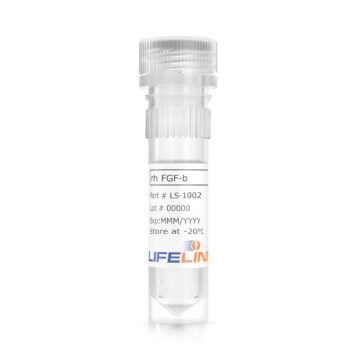
Dermal Fibroblasts Used to Study Induced Pluripotent Stem Cells and UV Radiation
The skin is the body’s first level of defense against the external environment. It is composed of multiple tissue layers that are held together by connective tissue, which supports and maintains the tissue, and contains immune system components. Connective tissue in the skin is generated by dermal fibroblasts—specialized cells located in the dermis, the second outermost layer of the skin. Dermal fibroblasts also produce extracellular matrix components, which allow the different layers of the skin to attach to one another and maintain their structure. These functions make dermal fibroblasts a critical player in wound healing.
Dermal fibroblasts are also one of the cells types from which induced pluripotent stem cells (iPSCs) can be derived. Introduction of certain cellular factors (commonly OCT3/4, SOX2, KLF4, and C-MYC) converts human fibroblasts to cells with pluripotent potential, termed iPSCs. iPSCs can then be induced to differentiate using various differentiation programs. iPSCs have significant implications for disease therapy: they can be differentiated into multiple lineages and are derived from adult tissue, so are not immunoreactive.
The Latest Research Using Lifeline® Dermal Fibroblasts
Lifeline® dermal fibroblasts in UV radiation response
Ultraviolet (UV) radiation has damaging effects on the skin and can contribute to aging and cancer. UV exposure causes increased levels of reactive oxygen species, which can activate the inflammatory response and alter cellular signaling pathways. Gruber et al. explored the molecular mechanisms that are activated to protect skin cells from the damaging effects of UV radiation. The researchers used Lifeline® human neonatal skin fibroblasts in a screen to determine the effects of long wave UV radiation (UVA-1) and UV-oxidized phospholipids on global gene expression. They found that UVA-1 exposure and UV-oxidized phospholipids upregulated a group of antioxidant genes. Interestingly, they found that this gene cluster was regulated by the NRF2 transcription factor, a known mediator of the antioxidant response. Therefore, the results of this study suggest that while UV radiation causes a number of detrimental effects, it also induces protective mechanisms through upregulation of NRF2.
Lifeline® dermal fibroblasts can be programmed into iPSCs
Induced pluripotent stem cells (iPSCs) have garnered much interest over recent years due to their tremendous potential for clinical applications. However, many of the current methods of generating and culturing iPSCs include the use of DNA-integrating viral vectors and mouse embryonic fibroblast (MEF) feeder cells. Hu et al. set out to develop efficient xeno- and feeder cell-free culture conditions to generate and propagate iPSCs. The researchers utilized Lifeline Human adult Dermal Fibroblasts, grown in Lifeline FibroLife® Xeno-Free Media, to knock down TP53 and introduce OCT3/4, SOX2, KLF4, L-MYC, LIN28 using non-integrating plasmids. They also used a number of small molecules to improve iPSC generation and human vitronectin in place of mouse feeder cells. This culture system resulted in efficient iPSC generation and in addition, the researchers demonstrated that these iPSCs could be differentiated into motor neurons. The results of this study demonstrate that iPSCs can be derived, expanded, and differentiated using a culture system that employs non-integrating plasmids and xeno-free components; this is particularly important for clinical applications where iPSC-derived cells should be free of non-human contaminants to minimize the immune response.
As demonstrated by these studies and more, Lifeline® human dermal fibroblasts can be used to study:
• The effects of UV radiation
• Induced pluripotent stem cells (iPSCs)
• Wound healing
• Extracellular matrix components
Lifeline® offers a variety of human dermal fibroblast cell types for your research needs, including:
- Human Dermal Fibroblasts- Neonatal (HDFn)
- Human Dermal Fibroblasts- Neonatal Xeno-Free (HDFn-XF)
- Human Dermal Fibroblasts- Adult (HDFa)
We test our fibroblasts in FibroLife® S2 or FibroLife® Xeno-Free Medium to ensure proper growth and morphology over at least 15 population doublings.
We want to hear from you about how you are using our fibroblasts. Send us your study and you could be featured here on our blog!
- Gruber et al., NF-E2-related factor 2 regulates the stress response to UVA-1-oxidized phospholipids in skin cells
http://www.ncbi.nlm.nih.gov/pubmed/19720622
- Hu et al., Derivation, Expansion, and Motor Neuron Differentiation of Human-Induced Pluripotent Stem cells with Non-Integrating Episomal Vectors and a Defined Xenogeneic-free Culture System
http://www.ncbi.nlm.nih.gov/pubmed/25663198

 rh FGF basic LifeFactor -- 0.5 mL
rh FGF basic LifeFactor -- 0.5 mL